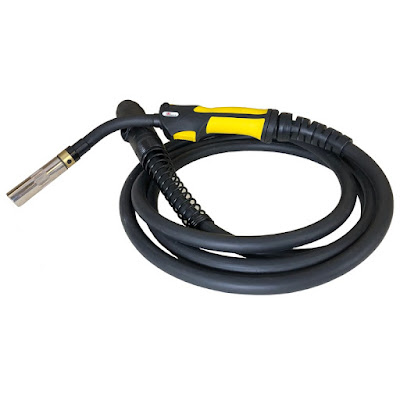The different welding practices for welding mild steel using a MIG welding gun
MIG [metal inert gas] welding is a process wherein a nonstop solid wire electrode is supplied through a welding gun and then into the weld pool, joining the two core materials together. Shielding gas is sent through the gun and guards the pool against contamination.
Welding mild steel practices
Push vs. pull: The forehand or push technique entails pushing the welding gun away from the weld puddle. Pushing typically generates lower penetration and a flatter, wider, bead since the arc force is aimed away from the puddle. Pushing also typically provides a better view and allows for bettering direct wire into the joint.
The pull or trailing technique helps the gun point back at the puddle and drag away from the metal deposited. Dragging naturally creates deeper penetration and a narrower bead.
Travel angle: It is described as the angle relative to the welding gun in a perpendicular arrangement. Typical welding conditions call for an angle of 5 - 15 degrees. Travel angles further than 20 - 25 degrees can cause less penetration, more spatter, and general arc unsteadiness.
Work angle: It involves the position of the gun that is relative to the welding joint angle, and it differs with every joint configuration and welding position.
Before undertaking a welding project, you need to ensure that you have the appropriate safety apparel and that potential fire hazards are eliminated from the welding spot.
The founders of Canaweld have been actively involved in research & development, sales and production within the welding and cutting industries since the 1980s. They have filed numerous patents and set new standards in the welding industry. Their machines are one amongst the best in excellence in the world.




Comments
Post a Comment